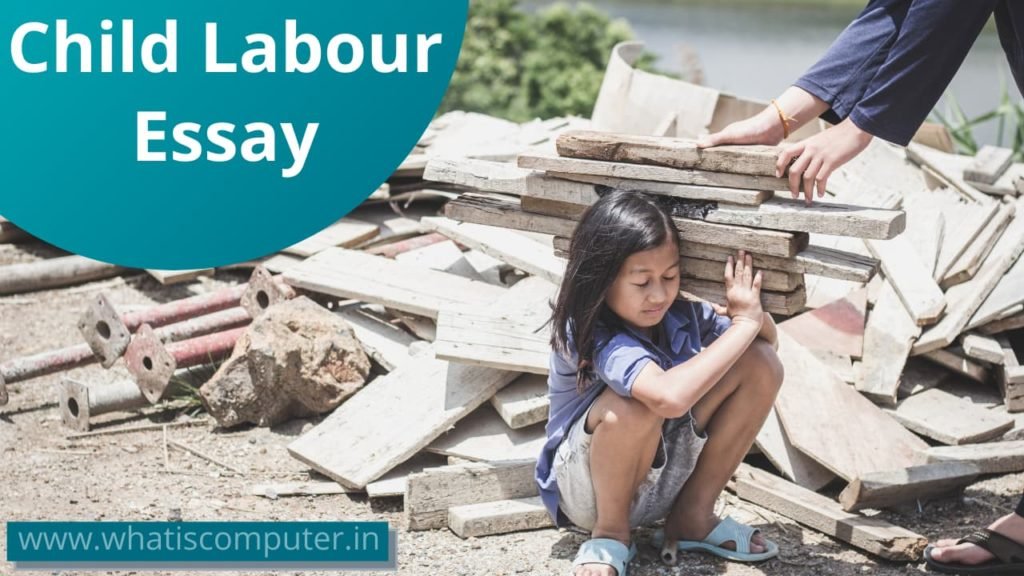Child Labour Essay
According to The Child Labour (Prohibition and A Regulation) Act of 1986, it is prohibited to employ children below the age of 14 years in hazardous occupations identified in a list by the law. Indian law has listed 64 industries in the category.

Child labour is the practice to employ children less than 14 years of age at work. It not only deprives them of their childhood but also hinders their mental and physical growth. Children are meant to learn, not to earn. One can glance a lot of small children working at tea stalls, restaurants and other hazardous industries. They are exploited at work. They are not even provided with safe environment to work in. Even then, it is shocking to note that, India has the highest population of child labour of about 4.98 million. The unorganised agriculture sector employs about 60 percent of the child labour population and the organised sector (manufacturing, packaging, hunting, transportation, etc.) employs approximately 40 percent of the remaining population.
Illiteracy, poverty, superstitious beliefs, improper health care and educational facilities are major causes of child labour in India. Child labour predates to the colonial era, where children were used as bonded labour and trafficked to several areas to get work done at lower costs. Parents too could not help their children break free from the clutches due to indebtedness towards the landlords as they were further exploited by the middlemen to the core. Children work as farmers, plantation workers, maids, etc. According to 2005 the Government of India NSSO (National Sample Survey Organization), child labour occurrence rates in India is maximum among Muslim
Indians, about 40% higher than Hindu Indians and tribal populations of about 4 percent. Indian law allows children to work with their family in family based trades/occupations, for the purpose of learning a new trade/craftsmanship or vocation. But the industries take the advantage of child labour by providing lower wages for the same work and parents too are forced to engage their children to get money home. Not only India, other countries like Africa, Australia, Switzerland and Brazil collectively contribute to about 217 million children employed as labour, some even as full-time workers.
Many NGOs like Bachpan Bachao Andolan, Child Fund, CARE India, Talaash Association, Child Rights and You, Global March Against Child Labour, RIDE India, Childline etc. have been working to eradicate child labour in India. Also, in 2013, a major benchmark in the name of child labour was given by the Punjab and Haryana court directing to the total ban on the employment of children less than 14 years of age. Indian government guarantees punishment against child labour incidences in a number of acts including The Factories Act of 1948, The Mines Act of 1952, The Juvenile Justice (Care and Protection) of Children Act of 2000 and The Right of Children to Free and Compulsory Education Act of 2009.
Indian government and various international bodies like International Labour Organization (ILO) and National Child Labor Committee have taken several initiatives in order to prevent child labour throughout the world. But, the number has declined tremendously during the past few decades. These organisations have helped the number by working on the factors like reduction in poverty levels, changing the mindset of people, provision of the educational and healthcare facilities to the needy.
Child labour is a curse to the society. Many laws and programmes have been initiated by the government of India to control the incidences of child labour but unfortunately it still prevails. Making laws isn’t enough, their implementation must be observed and checked with due creation of awareness about the serious problem of child labour.
Child Labour Essay PDF
ALSO READ: